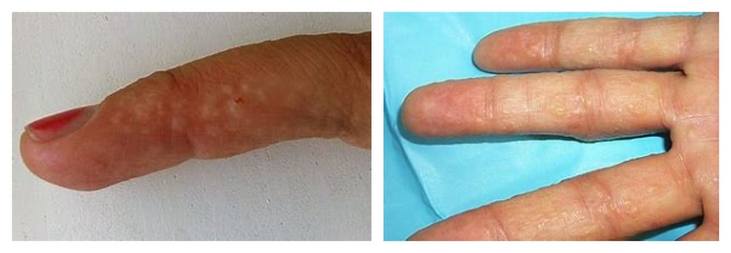Dyshidrotic eczema is a type of skin condition characterized by small blisters, specifically occurring on hands and feet. A single specific cause for these itchy fluid-filled eruptions appearing on the palms, soles and fingers is yet unknown, though many relevant causes have been discovered. These itchyeruptions appearing on the skin are pompholyx (bubble shaped) which might later develop into scales and fissures. The disease takes its name from the word “dyshidrotic” which literally means “bad sweat”, as thought by many to be the primary cause, but has no proven association. The disease might be chronic and notorious for being unresponsive to treatment, making the treatment procedure frustrating.
Facts About Dyshidrotic Eczema

- Incidences of Dyshidrotic Eczema Around the World. Out of the total number of hand eczema cases, there is a chance that 5-20% might develop into dyshidrotic eczema which occurs more in warmer countries or warmer months.
- In the US, the incidence / prevalence is said to be at 1/5000, but the figure might be misleading as many cases of eczema are diagnosed as garden-variety atopic eczema.
- A study of 714 patient records in Portugal over a period of 6 years revealed dyshidrotic eczema to be the third most common type of hand dermatitis with 20.3% cases.
- There is no specific age group affected by dyshidrotic eczema as the age of patients suffering varies from 4 years to 75 years and the mean age is 38 years.
- Most number of cases registered are for the age group of 20-40 years when people have the most hectic lifestyle with the occurrences diminishing in later ages.
- The male-to-female ratio for dyshidrotic eczema has been reported to be variably between 1:1 and 1:2.
Dyshidrotic Eczema Treatment
Treatment of the disease varies on the type of dyshidrosis affecting the patient. The most common type of treatment options available are:
- The first-line of treatment includes high strength topical steroids which, while effective, might be dangerous in the long term due to the skin thickening especially experienced in the palmoplantar (occurring on the palm region) infections.
- If bullae (an aggravated blister) appear on the feet, it is advised you take bed-rest and minimize feet activity.
- Corticosteroids might be used for treatment, starting with Class I steroids and then moving to Class II or Class III.
- In case of nickel or cobalt allergies, a diet low on these metals is prescribed. The foods to be avoided are oatmeal, chocolates, canned foods, etc.
Online portals like Patient Like Me and MD Junction offer a chance to those suffering from dyshidrotic eczema to connect with other patients for support as well as guidance in treatment.
Dyshidrotic Eczema
Dyshidrotic eczema is a type of skin condition characterized by small blisters, specifically occurring on hands and feet. A single specific cause for these itchy fluid-filled eruptions appearing on the palms, soles and fingers is yet unknown, though many relevant causes have been discovered. These itchyeruptions appearing on the skin are pompholyx (bubble shaped) which might later develop into scales and fissures. The disease takes its name from the word “dyshidrotic” which literally means “bad sweat”, as thought by many to be the primary cause, but has no proven association. The disease might be chronic and notorious for being unresponsive to treatment, making the treatment procedure frustrating.
Incidences of Dyshidrotic Eczema Around the World
– Out of the total number of hand eczema cases, there is a chance that 5-20% might develop into dyshidrotic eczema which occurs more in warmer countries or warmer months.
– In the US, the incidence / prevalence is said to be at 1/5000, but the figure might be misleading as many cases of eczema are diagnosed as garden-variety atopic eczema.
– A study of 714 patient records in Portugal over a period of 6 years revealed dyshidrotic eczema to be the third most common type of hand dermatitis with 20.3% cases.
– There is no specific age group affected by dyshidrotic eczema as the age of patients suffering varies from 4 years to 75 years and the mean age is 38 years.
– Most number of cases registered are for the age group of 20-40 years when people have the most hectic lifestyle with the occurrences diminishing in later ages.
– The male-to-female ratio for dyshidrotic eczema has been reported to be variably between 1:1 and 1:2.

